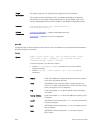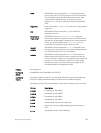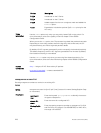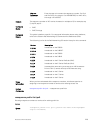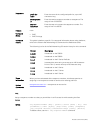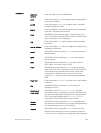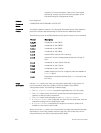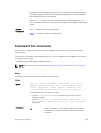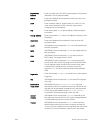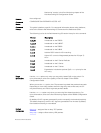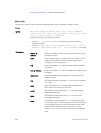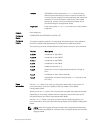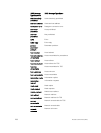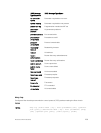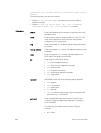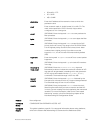ip-protocol-
number
Enter a number from 0 to 255 to deny based on the protocol
identified in the IP protocol header.
source Enter the IP address of the network or host from which the
packets were sent.
mask Enter a network mask in /prefix format (/x) or A.B.C.D. The
mask, when specified in A.B.C.D format, may be either
contiguous or noncontiguous.
any Enter the keyword any to specify that all routes are subject
to the filter.
host ip-address Enter the keyword host then the IP address to specify a host
IP address.
destination Enter the IP address of the network or host to which the
packets are sent.
count (OPTIONAL) Enter the keyword count to count packets that
the filter processes.
bytes (OPTIONAL) Enter the keyword byte to count bytes that the
filter processes.
dscp (OPTIONAL) Enter the keyword dcsp to match to the IP
DSCP values. The range is from 0 to 63.
order (OPTIONAL) Enter the keyword order to specify the QoS
priority for the ACL entry. The range is from 0 to 254 (where
0 is the highest priority and 254 is the lowest; lower-order
numbers have a higher priority). If you do not use the
keyword order, the ACLs have the lowest order by default
(255).
fragments Enter the keyword fragments to use ACLs to control packet
fragments.
log (OPTIONAL) Enter the keyword log to include ACL matches
in the log.
threshold-in
msgs count
(OPTIONAL) Enter the threshold-in-msgs keyword
followed by a value to indicate the maximum number of ACL
logs that can be generated, exceeding which the generation
of ACL logs is terminated with the
seq, permit, or deny
commands. The threshold range is from 1 to 100.
interval
minutes
(OPTIONAL) Enter the keyword interval followed by the
time period in minutes at which ACL logs must be generated.
The threshold range is from 1 to 10 minutes.
monitor (OPTIONAL) Enter the keyword monitor when the rule is
describing the traffic that you want to monitor and the ACL
in which you are creating the rule is applied to the monitored
interface. For more information, refer to the “Flow-based
234
Access Control Lists (ACL)



